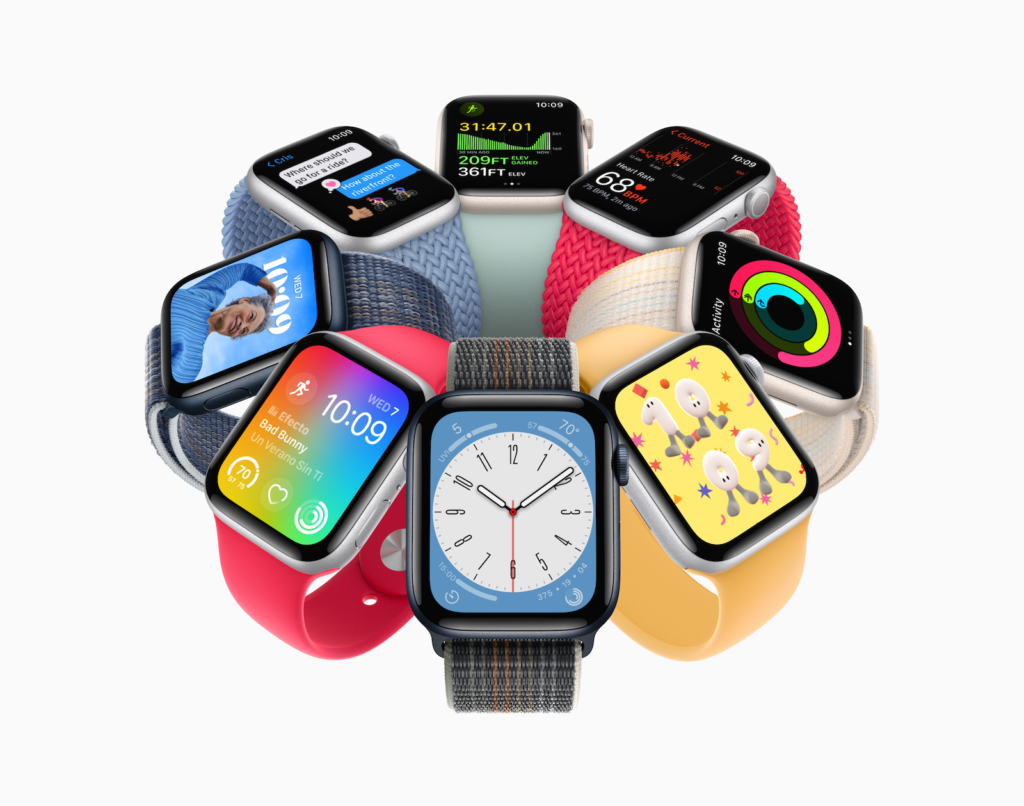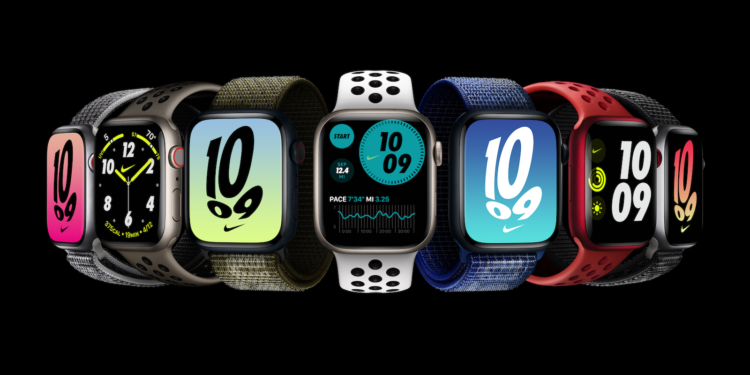The first reviews of the Apple Watch Series 8 and the second generation of the Apple Watch SE are here. Below is an overview.
For The Verge, most of the upgrades to the Apple Watch Series 8 are not visible to the naked eye, as it has exactly the same design with slightly different colors. review It is pointed out how the body temperature sensor works, since Apple has not provided much information about it:
The watch's temperature measurement is mostly passive. Unlike the existing ECG, heart rate, and blood oxygen sensors, you can't take measurements on demand. You can only take wrist temperature if you have Sleep Focus turned on and sleep tracking enabled. Also, you have to sleep with the Apple Watch for five nights to establish a baseline. After that, all you'll see are deviations from that baseline. You'll never look at your wrist and say, "Oh, I have a fever because my temperature is 100 degrees Fahrenheit." If you track your cycles in the Health app, enabling wrist temperature measurement can help you retrospectively estimate ovulation after about two cycles.
Tom's Guides speaks about the new car crash detection feature and introduces two improved sensors on the Apple Watch Series 8:
Apple Watch Series 8 features two new motion sensors, as well as an improved gyroscope and accelerometer. Together, they can detect motion 4x faster than before, so the watch will be able to detect an accident exactly when it happens. And in the event of an accident, Apple Watch will automatically call emergency services and notify your emergency contacts. It's a grim thought, but faster help could mean the difference between life and death.

Apple Watch Series 8: Does the S8 chip improve battery life?
Engadget notices that the new S8 chip is not faster but could improve battery performance in general:
Although the Series 8 uses a newer S8 system-in-package processor, it didn't feel significantly faster than its predecessor. Battery life is a bit longer overall, but I'll need more time testing to know for sure. I also suspect the larger size might have something to do with it. I used the new power saving mode in watchOS 9 one morning when the Series 8's battery was down to 20 percent and I still had to run to the gym for an 8 a.m. workout. The watch lasted at least two more hours while also tracking my performance during the HIIT class. I was impressed by how little I had to sacrifice for the extra juice.
The Wall Street Journal praises the new energy saving mode:
Power Saving Mode reduces the always-on display and background heart rate measurements while maintaining activity tracking and fall detection—ideal for long flights or a weekend without a charger. In my testing, Power Saving Mode extended the battery life of the Series 8—as well as my older Series 7 watch. The watches still had some battery left after 36 hours, but needed to be topped up to 30 % for a second night of sleep tracking. (Apple's 36-hour estimate is based on testing without sleep tracking, though sleep tracking works with the feature enabled).
Apple Watch SE (2022) Reviews
The Streets summarizes togetherWhat it's like to choose the new Apple Watch SE in 2022:
The Apple Watch SE is best if you're new to the Apple Watch, don't need all the health features of an always-on display, or if you have an older model like a Series 1, 2, or 3.

Engadget supplemented The Streets report and shows what you lose if you choose the Apple Watch SE:
The main features you'll miss out on if you choose the SE over the Series 8 are the always-on display (AOD), ECG feature, blood oxygen app, and new skin temperature sensor. Like the older SE models, this year's model charges slower than the Series 7 and 8 and doesn't have a U1 chip for ultra-wideband. It's also not as dust-resistant as its premium models (IP6X).
Overall, the testers come to the conclusion that both Apple Watch models are very incremental upgrades. (Image: Apple)





